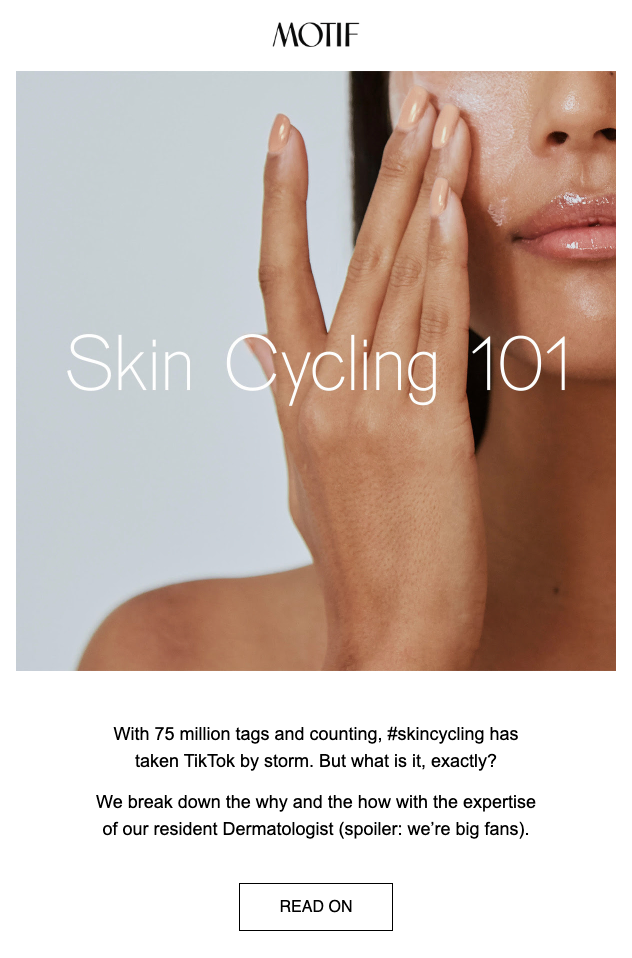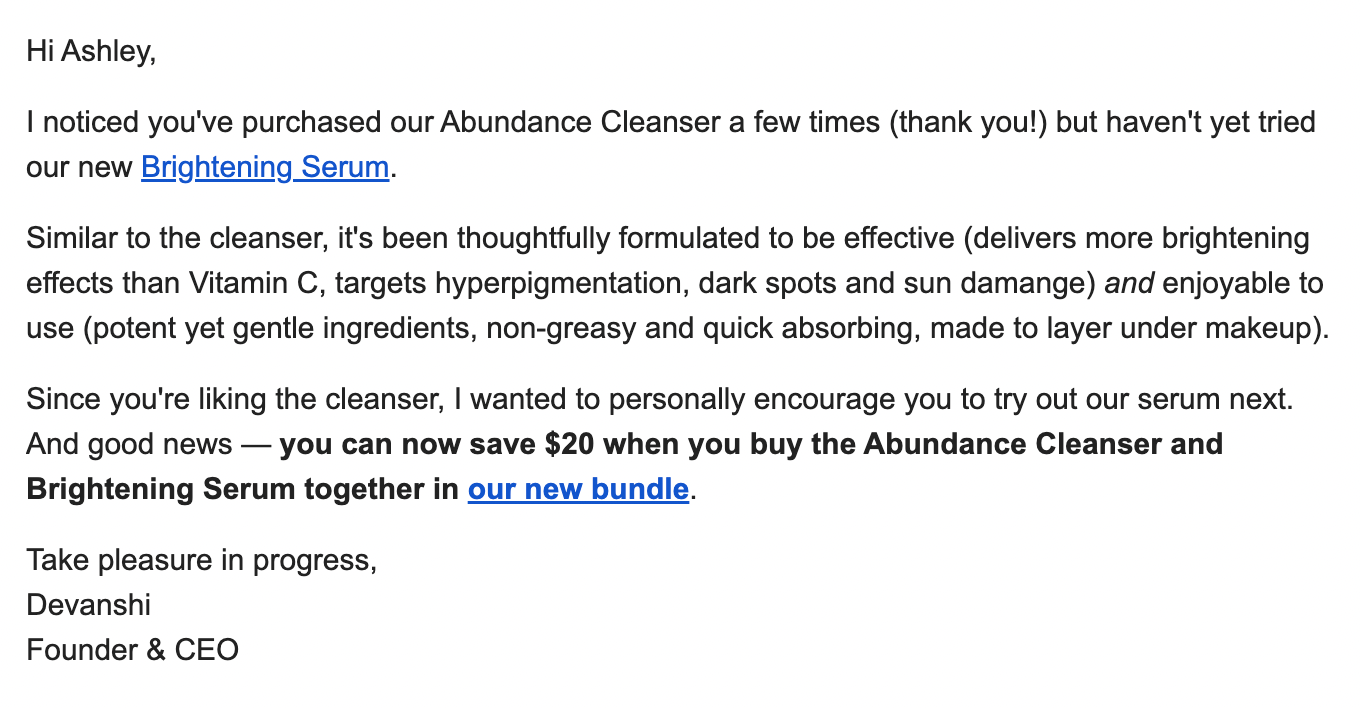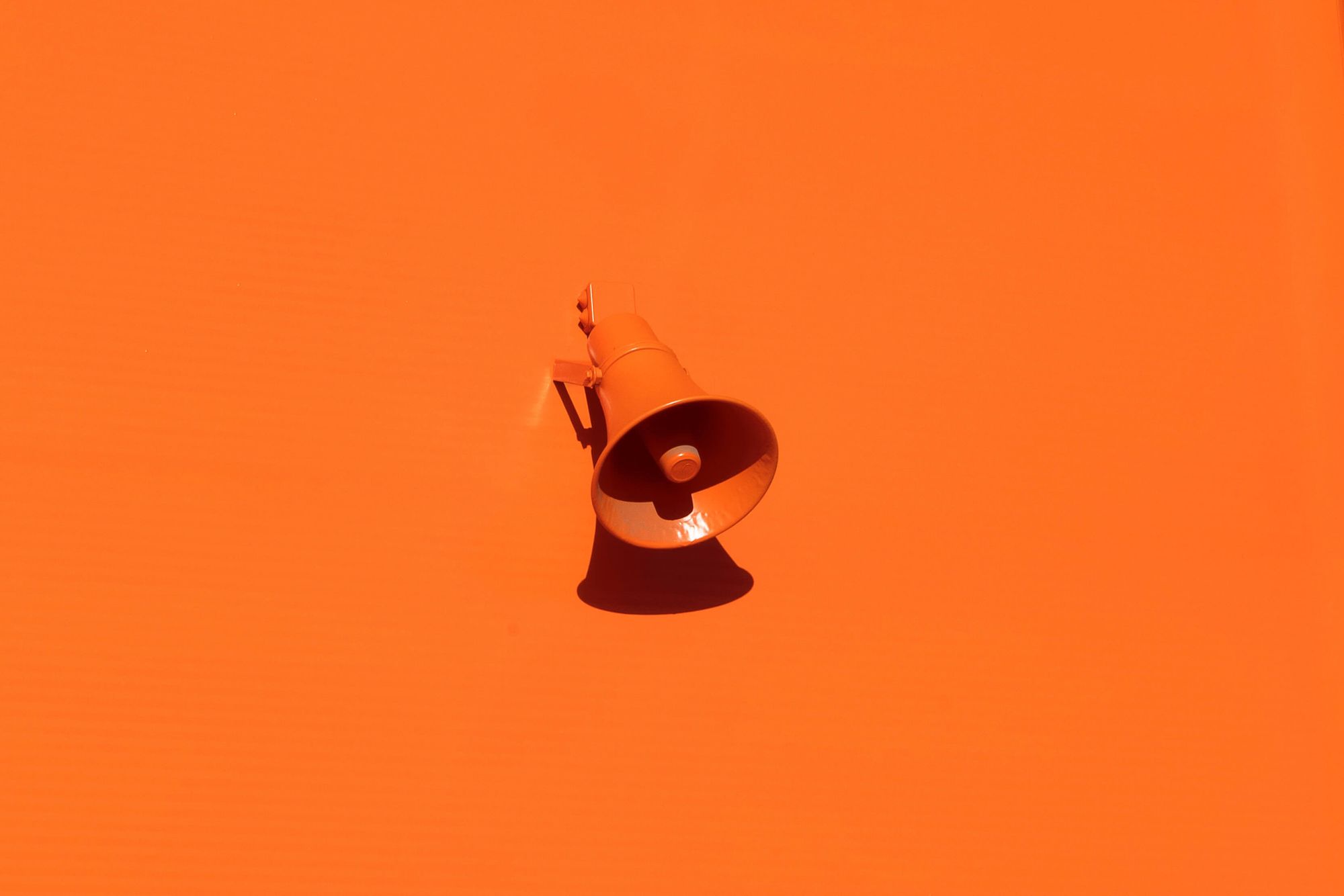
How My E-commerce Company Has Used Personalization to Build an Email Marketing Channel With a 55 Percent Open Rate
Learn how a focus on personalized retention marketing helps Devanshi Garg Sareen manage high acquisition costs and succeed in a crowded market.
Founder and CEO of Motif Skincare
From the moment I started my company, Motif Skincare, I knew I was entering a crowded market with high customer acquisition costs. It would be challenging to compete with influencers and larger brands when it comes to fueling new customer discovery. As such, the primary goal was to create products that truly made a difference in people's routines—products they would discover and want to buy again and again—and to focus our marketing efforts on fostering that hyper-loyalty.
This isn’t to say I don’t do any top-of-the-funnel marketing. We utilize many of the traditional growth channels: organic social, paid ads, influencers and affiliates, and PR. But instead of using channels like social to solely push sales, we root our strategy in retention marketing, focusing on email signups as a goal. This allows us to focus on building a relationship with customers over time, turning email into a high-impact channel that boasts over 50 percent open rates and drives a large percentage of our revenue.
Brand emails can feel so impersonal these days, but I think someone signing up for your email list is an intimate thing. It’s the closest many of us will ever be to our customers, and I don’t take that lightly as a founder. Here are the ways I’ve prioritized a personalized feel to my email marketing so my customers feel valued—and want to keep buying from us for years to come.
We don’t just sell in our emails
The traditional way of approaching email marketing as an e-commerce company goes something like this: Talk about your product, flip the script and talk about your product a little differently, now maybe offer a discount for your product, and so on. I’m the first person to unsubscribe from emails that feel like they’re bombarding me, so I always wanted to personalize our email strategy with content our customers are excited to read.
What that came down to for us is leaning into content around topics related to our space as much as we talk about our products. We want to be a meaningful destination for customers as they navigate their skincare journeys, but we also want to engage them in a broader conversation around progress and potential—because when you can spend less time worrying about your skin, you free up headspace to invest elsewhere in the things you love. So, our emails often talk about the science of good skincare, address trends and debunk myths, and interview inspired individuals on thoughtful topics, all of which makes great email content.

Teaching email subscribers that we are going to be a reliable source of useful and inspiring information bolsters our open and engagement rates across the board. These educational emails often have lower unsubscribe rates and can drive 10 to 20 percent higher click-through rates than other types of emails, which helps improve engagement metrics across the board. When customers see us in their inbox, they’ve come to trust that we’re sending them something worth reading, so we feel confident we can capture their attention even when inboxes become especially crowded during peak promotional periods.
It takes more work to provide valuable content instead of just touting our products, but we lighten the load for our small team by doing a lot of content repurposing. For instance, if our social media manager is creating a slideshow around a skincare topic or working with a particular influencer, we think about how that content could be expanded or reframed into an email. This creates consistent messaging across channels and helps draw customers deeper into our funnel.
We make customers feel like we’re emailing one-to-one
Personalization is the north star for succeeding at retention marketing. Instead of a one-size-fits-all approach, we’ve found an edge by spending a little extra time making sure that most touchpoints have some element of personalization.
It’s not all that hard to do, especially if you have your tech stack set up to ingest all the data you have about who you’re emailing. For example, when we are emailing customers about sales or new products, we like to reference the context of their prior relationship with us. When we launched our second product, the Brightening Serum, we reached out to folks with messages like: “We noticed that you’ve repurchased our cleanser X many times, and we are so appreciative of that. We think you’d really enjoy our next product.” This shows subscribers that we’re paying attention to them as individual customers, which fuels loyalty and retention.
Sometimes, personalization is as simple as making it feel like we’re emailing them individually. We send a lot of plain text emails: Unformatted emails that hit our customers’ inboxes and look like I literally sat down and typed a message for them. It’s meaningful for our customers to feel like they got a note straight from the founder, and a lot of people will respond directly to these emails. While the initial email blast isn’t actually one-to-one, we always make sure to reply to anyone who writes back so they know we’re real people behind the scenes and that we truly do hear them. Almost no one unsubscribes from these types of emails, and they tend to have higher than average engagement rates because of their intimate-feeling nature.

We segment our most engaged and our least engaged
Segmenting our email list to only send certain messages to certain cohorts is another aspect of our personalization strategy. There are so many ways to divvy up your subscribers as a brand, but we like to focus on the most engaged and the least engaged.
For the most engaged, we look for ways to reward them. Whenever we’re going to run a sale or launch a new product, we cut a list of what we consider our best customers (based on both purchase behavior and engagement) and send them a first-to-know campaign, giving them access to the deal before anyone else has it. We typically use those plain-text emails I mentioned above and focus the messaging on building goodwill with these customers while making them feel valued. These are by far the best-performing touchpoints we send, with open and click-through rates that are upwards of 20 percent higher than other promotional emails (sometimes over 100 percent higher) and the highest conversion rates we see across our program.

We also segment out our least engaged subscribers by not emailing them. It’s tempting to maximize your list by emailing everyone, but the reality is only a portion of your list is going to remain active and impactful, and those who don’t can actually hurt you in the long run. We generally only send emails to people who have engaged with one of our messages in the past six months, making exceptions for bigger moments that might have a better chance of re-engaging a lapsed subscriber.
When you consistently send to disengaged subscribers, it signals to inbox providers that your emails aren’t relevant, and over time, this can result in more of your emails landing in spam. By removing disengaged folks (once we’ve unsuccessfully attempted to re-engage them, of course), we’re able to maintain and even improve our metrics overall. Nobody wants to give up on an email subscriber, but it’s important to think more holistically than that about the health of your program list as a whole.
We measure against our own benchmarks to learn what works for our customers
When it comes to email marketing or any marketing strategy, it’s so tempting to mimic what everyone else is doing. You can find endless content around best practices and benchmarks, and those are great starting points, but at the end of the day, you have to figure out what works for your brand and your customers—meaning the most important benchmark is your own.
When we started building our email program, we drew a line in the sand showing where our engagement metrics were sitting and then got to testing. We tested smaller elements like subject lines and send times. We tested bigger elements like how frequently people wanted to hear from us and what kind of content they resonated with most. With each test, we looked at how our audience responded and used that to inform and iterate our broader strategy.
Along the way, we inevitably tried things that just didn't work, but we also took some big, out-of-the-box swings that paid off. It takes time to figure out the right retention strategy for your brand, but if you’re willing to put in the effort to experiment and pay close attention to how your audience responds, it will pay off in dividends.
Try Buffer for free
140,000+ small businesses like yours use Buffer to build their brand on social media every month
Get started nowRelated Articles

Eric Lam felt a pull for creativity and left his full-time job at a VC firm to grow a newsletter business. Four months in, he'd grown ExplodingIdeas.co into a profitable newsletter business. Learn the strategies behind the newsletter's success and get insights for your own entrepreneurial journey.

In this article, we’ll be sharing the steps to starting your own newsletter.

In this edition of #AskBuffer, we go over the best practices for gaining more newsletter subscribers.